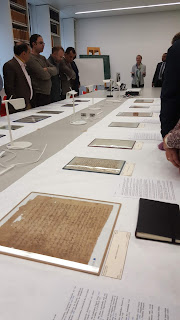This is a very rare Cockerel-shaped tin coin of Kedah Sultanate.
This coin is in the shape of a fighting cockerel perched on a number of rings attached to its base. In this specimen, 10 rings are attached to its base.
See picture below to understand how the cockerel money looks like.
According to The Encyclopedia of the Coins of Malaysia Singapore & Brunei, the cockerel itself worths 5 cents of the Spanish Dollar with each ring carries 1 cent in value. The rings were broken off for a small purchase of a few cents.
This type of currency was first regulated during the time of Sultan Muhammad Jiwa Zainal Abidin Muazzam Shah reigning Kedah from 1710CE to 1773 CE. They were still in circulation till mid 19th Century.
Kedah is located in the northwestern part of Peninsular of Malaysia. The name of Kedah originated from the Sanskrit word Kadaram. It is also known by its Arabic honorific, Darul Aman ( Abode of Peace). The sultanate was the earliest one on the Malay Peninsular as well as one of the oldest Sultanate in the world.
The kingdom began in 630CE as a Hindu Kingdom which the first king was Maharaja Derbar Raja who originally a defeated Persian king of Gemeron ( Bandar Abbas) who fled to Kedah. The people of Kedah found him to be a very smart & tactical man, so they entrusted him to lead them as the king of Kedah.
This kingdom is a Hindu kingdom however I couldnt find in any history book in regards to the faith of Maharaja Derbar Raja. In 630 CE, Gemeron is part of Sassanian Kingdom which Zoroastrian is the main religion.
Towards the end of 11th century, the 9th Kedah Hindu king, Dubar Raja II renounced Hinduism and conerted to Islam. He adpoted an Islamic name, Sultan Muzafar Shah and continued ruling Kedah from 1136 to 1179 CE. This sultanate continues to rule till today.
This mean the present Sultan of Kedah, Sultan Abdul Halim Muzaffar Shah has a direct link back to not just the first Kedah Sultan, Sultan Muzaffar Shah (1136CE) but also to the first Hindu Sultan , Maharaja Derbar Raja ( 630CE). Try to imagine someone with unbroken family lineage since 630CE till now. Unbelievable!!
Weight :TBA gm
Dim : 15cm x 4cm
Rarity : RRR
Denom : 10 cincin = 10 cents, cockerel = 5 cents
Material : Tin
Reference : Saran's SS20 , pg 260
















